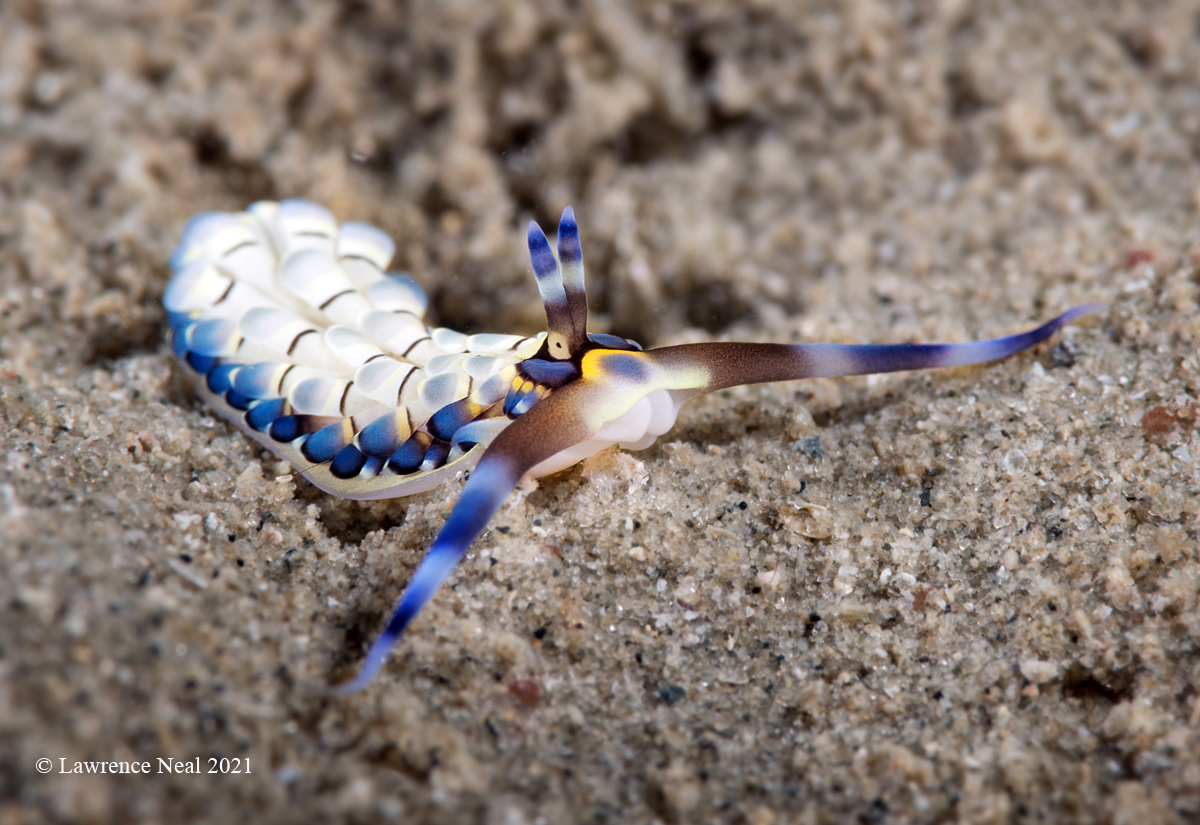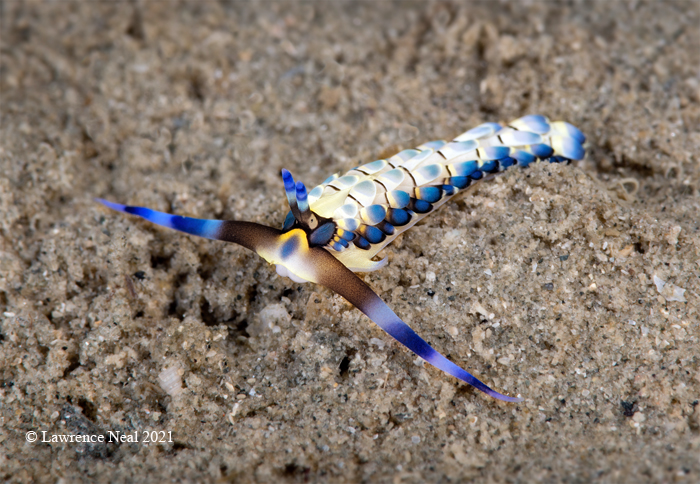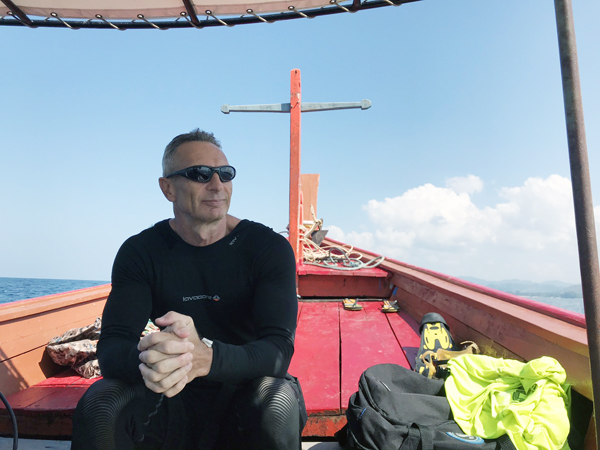 |
Image courtesy of Lawrence Neal
Koh Libong (Libong Island) in the Andaman Sea
|
Image courtesy of Lawrence Neal Koh Libong (Libong Island) in the Andaman Sea  |
Cerberilla sp.1 (in NSSI 2nd Edition) Wow - another spectacular Cerberilla. What a beauty. The body is translucent. The oral tentacles are long and variably banded with blue. The dorsal cerata have a thin black and yellow ring with light blue apices. The head has a black and yellow "mask." Like the oral tentacles, the rhinophores have blue bands. Originally known only from Tahiti, Lawrence's critter was shot in Koh Libong (Libong Island) in the Andaman Sea (eastern Indian Ocean), Trang province of southwestern Thailand Like other species of Cerberilla, it likely feeds on burrowing sea anemones. What a beauty. Dave Behrens Sammamish, WA 98074 Mar., 2021 Send Dave email at davidwbehrens@gmail.com |
Lawrence Neal

|
Lawrence Neal is a newspaper journalist based in Bangkok, Thailand. He escapes the office as often as he can to go diving in the rich waters of the Indo-Pacific but his regular dive sites are just down the road at Pattaya. The vis is usually pretty appalling and the diversity nothing like as rich as hotspots like Lembeh or Anilao, but, in his words, "that's what makes it challenging and fun".
Lawrence uses a Nikon D850 with 105 mm Nikkor lens ISO 64, 1/250 sec., f20, 2 X Backscatter Mini Flash MF-1 strobes.
Lawrence Neal
Send Lawrence mail at lorenzo_n@yahoo.com |

| Attention all you Sluggers, and you know who you are! The NSSI 2nd edition is now available in ebook PDF and book form . The hard back version will become available Nov. 1st. Both will cost $65 (individually). You will need to jump through a few hoops to get the electronic version as pdf distribution is protected by Adobe ID!! Please read the following to enable reading your electronic purchase! This new 2nd Edition is updated and reorganized, including 185 new species. Among other features, the new edition includes additional photographs of species, an identification key, and an up-to-date classification reflecting the latest evolutionary relationships. The Indo-Pacific represents the largest expanse of tropical ocean in the world, stretching from the Indian Ocean coast of southern Africa and the Red Sea to the central Pacific of the Hawaiian Islands, Easter Island and the Marquesas. This region supports the most diverse marine fauna of any place in the world for most groups of marine organisms. The nudibranchs and sea slugs are no exception to this rule; there are about 3,000 described species of these organisms in the world and at least 40% of these have been found exclusively in the Indo-Pacific tropics. This book illustrates 2,138 Indo-Pacific nudibranchs and sea slugs, including many undescribed species.
|

|
